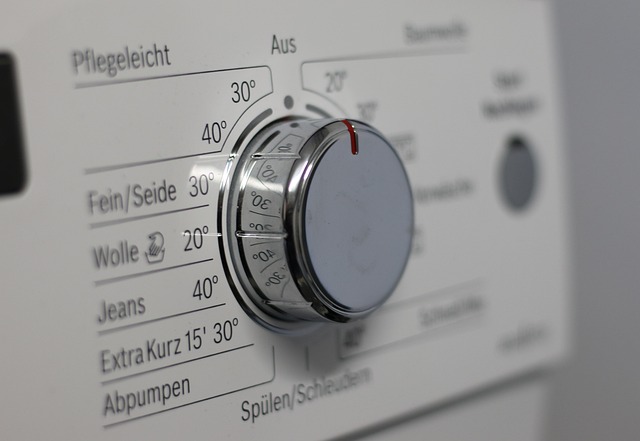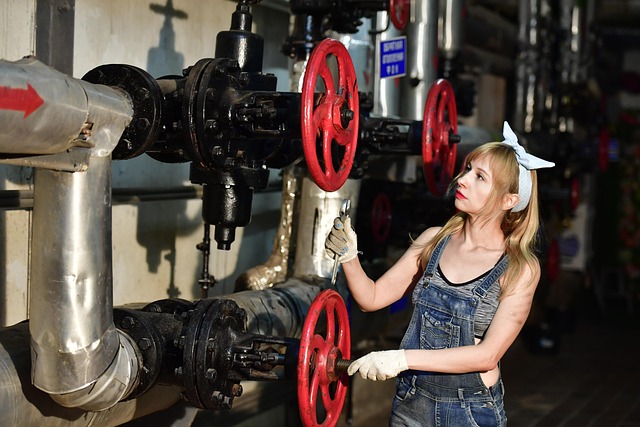Homeowners should address broken thermostats promptly to avoid system failures. Regular cleaning and correct placement prevent malfunctions. Basic tools like screwdrivers, pliers, and a multimeter aid in emergency repairs, including gas boiler and AC unit issues. A step-by-step guide offers a quick, affordable thermostat replacement. Professional heating controls repair is recommended for complex diagnoses and long-term savings. Regular maintenance, including filter checks and wiring inspections, extends system lifespan and prevents costly breakdowns.
Stranded with a broken thermostat? Don’t sweat it—affordable emergency repairs are within reach. Learn how to navigate common causes of thermostat malfunction and equip yourself with essential tools for DIY fixes. Follow our step-by-step guide to replacement, ensuring your comfort year-round. Discover when professional help is crucial and explore preventative measures for future breakdowns. Take control of your heating controls repair today!
- Common Causes of Thermostat Malfunction
- Tools Needed for Emergency Repair
- Step-by-Step Guide to Replacement
- When to Call in Professional Help
- Preventative Measures for Future Breakdowns
Common Causes of Thermostat Malfunction

Broken thermostats are a common issue, often stemming from simple wear and tear or environmental factors. Understanding the root causes can help homeowners address the problem promptly. One of the primary reasons for thermostat malfunction is age; over time, these devices can degrade, leading to inaccurate temperature readings and faulty operation. Extreme temperature fluctuations, whether from excessive heat or cold, can also cause damage, especially if the thermostat isn’t properly protected against outdoor conditions.
Another frequent issue is dust accumulation, which can interfere with the thermostat’s sensors. Regular cleaning, including wiping away dust and debris, is essential to maintain optimal performance. Moreover, improper placement is a less common but still significant factor; thermostats should be away from direct sunlight, drafts, or heat sources like radiators, as these can skew readings and lead to ac unit heating issues or, conversely, inefficient cooling. Even something as simple as a blown fuse or faulty wiring could cause the entire system to malfunction, necessitating an emergency heating controls repair.
Tools Needed for Emergency Repair

When faced with a broken thermostat, especially as an emergency repair, having the right tools is key to swift and effective fixing. The basics for any heating controls repair include a set of screwdrivers (both flathead and Phillips), pliers, a multimeter, and thermal paste (for digital thermostats). These tools empower you to navigate through various issues, from loose connections to faulty sensors.
For instance, when dealing with a gas boiler troubleshooting guide or an ac unit heating issue, the multimeter is invaluable for checking voltage and continuity. Pliers help in tightening or replacing worn-out parts, while screwdrivers are essential for disassembling and reassembling components. Even seemingly simple issues like a dishwasher heating problem can be tackled efficiently with these tools, ensuring your comfort and convenience without breaking the bank.
Step-by-Step Guide to Replacement

Step-by-Step Guide to Replacement
If your thermostat is broken, a quick and affordable replacement can often be the solution, especially in emergency situations when you need your heating controls to function promptly. Here’s a straightforward guide to help you navigate this process. First, turn off your heating system at the main control panel or circuit breaker. This safety measure ensures no unexpected operation while you work on the repair. Next, locate and remove the old thermostat, taking note of its placement and any wires connected to it. Once removed, clean the area and inspect the wiring for damage.
With a new thermostat in hand, follow these steps: attach the wiring according to your model, ensuring each wire is securely connected; test the power source with a multimeter (a tool for measuring electrical current); and program the new thermostat according to your heating system’s requirements. After programming, turn on your heating controls at the main panel and observe if the system operates as expected. Regular maintenance, including cleaning your heating system and addressing issues like a heat pump freezing up, can prevent future breaks and ensure optimal performance from your HVAC systems.
When to Call in Professional Help

If your thermostat is displaying erratic readings or failing to regulate the temperature as it should, don’t ignore these signs. While a malfunctioning thermostat might seem like a minor inconvenience, it can lead to more significant issues with your heating and cooling systems over time. In such cases, calling in professional help for heating controls repair is advisable.
Professional HVAC technicians are equipped to diagnose complex problems that may be beyond the scope of a DIY approach. They can accurately identify whether the issue lies with the thermostat itself, the heating control panel repair, or even a faulty heat pump condensing unit repair. Prompt attention from experts ensures your home maintains a comfortable temperature, prevents further damage to the system, and could save you money in the long run by avoiding costly repairs or premature replacements.
Preventative Measures for Future Breakdowns

Regular maintenance can significantly extend the lifespan of your heating controls and prevent costly emergency repairs. One effective measure is to regularly check and clean or replace air filters, as a dirty filter can restrict airflow and cause the thermostat to malfunction. Additionally, inspecting the wiring and connections for any signs of damage or corrosion is crucial, especially in older systems. Addressing minor issues early on can save you from more significant problems later on.
For specific components like heat pump defrosters, water heater thermostats, or baseboard heaters that aren’t working, timely replacement is often the best solution. Keeping an eye out for unusual noises or inefficient heating can also help in identifying potential problems before they escalate. By taking these preventative measures, homeowners can avoid unexpected breakdowns and ensure their comfort during all seasons, making it easier to manage energy costs and maintain a well-functioning home environment.
Broken thermostats can cause significant discomfort, but with a bit of knowledge and affordable tools, you can quickly fix the issue yourself. By understanding common causes of malfunction, having the right tools on hand, and following a simple replacement guide, you’ll be able to resolve emergency thermostat problems. Remember, timely maintenance and preventative measures like regular cleaning can also significantly reduce future breakdowns. For more complex issues or when convenience is key, professional heating controls repair services offer a reliable solution.
